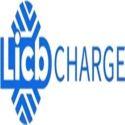Notifications

4 minutes, 37 seconds
-61 Views 0 Comments 0 Likes 0 Reviews

The Complex Shift from Gas Pumps to EV Chargers at Fueling Stations
The transition from traditional gasoline pumps to electric vehicle (EV) chargers at fueling stations is far more complex than simply swapping hardware. While adding China EV chargers seems straightforward, differences in technology, cost, infrastructure, and business models present significant challenges for many fuel retailers.
Most gas stations today that offer EV charging provide DC fast chargers, capable of replenishing 80% battery charge in 20 to 30 minutes depending on the vehicle. These chargers aim to replicate the quick refueling experience drivers expect. Some stations also install Level 2 chargers for slower, longer-duration charging during extended stops.
High Installation Costs
Fast chargers require substantial electrical upgrades, including possible transformer replacements and grid connection enhancements. The cost for installing a single high-speed charger ranges widely—from $50,000 to over $200,000—depending on site conditions. Older stations with outdated electrical infrastructure face especially high upgrade expenses. Additional costs come from lost parking space, maintenance, and developing payment systems.
Uncertain Profitability
Unlike gasoline sales with well-established margins, EV charging revenue streams remain unclear. Pricing models are still evolving amid consumer expectations for free or low-cost charging. Fuel retailers may need to rely more on ancillary services—such as food, beverages, or retail sales—to maintain profitability while customers wait.
Expanding charging station density is critical for EV adoption. Installing chargers at locations with convenient access and long dwell times—such as residential complexes, retail centers, airports, and transit hubs—helps meet this goal. Publicizing these efforts encourages other businesses to invest in charging infrastructure, accelerating network growth.
According to the Boston Consulting Group (BCG), gas stations should:
Focus on Customer Experience: Shift from simply selling fuel to enhancing convenience offerings—better food choices, entertainment, comfortable waiting areas—to improve customer satisfaction during longer charging times.
Enhance Charging Services: Differentiate by providing seamless digital payment, loyalty programs, rewards, and promotions to build repeat business.
Leverage Partnerships and Incentives: Collaborate with EV infrastructure providers and local governments to access tax credits, grants, and regulatory assistance that reduce installation costs.
Electrical Demand Assessment: Stations must evaluate their capacity for the high power loads of Level 3 fast chargers. Upgrading electrical infrastructure can be costly and time-consuming.
Site and Layout Planning: Chargers should be placed for easy access without obstructing traditional fueling. Designing for scalability allows future expansion to meet growing demand.
Permits and Compliance: Navigating local regulations and securing permits are essential steps, often requiring expert guidance.
Safety Protocols: High-voltage systems demand emergency shutoffs, clear signage, staff training, and routine maintenance to ensure safe operation.
EV adoption will continue accelerating, compelling gas stations to adapt. While installation costs and uncertain revenue pose challenges, those willing to evolve their business models—offering not just charging but an improved customer experience—will thrive.
The future fuel station is more than a pump; it’s a place that meets modern mobility needs with convenient, safe, and customer-focused electric charging solutions. By embracing this transformation, gas stations can secure their role in a cleaner, electrified transportation ecosystem and build lasting connections with their communities.Learn more about Google SEO.
China EV Chargers EV Charger Manufacturer EV Charging Solutions

